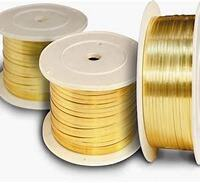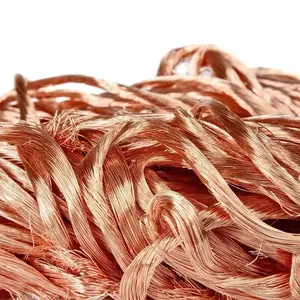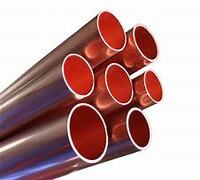1. Introduction
Just 24 hours ago, global copper prices surged past $10,000 per metric ton amid supply concerns from major producers in Chile and Peru. This spike has reignited interest in copper-based materials across construction, electrical, and recycling sectors—especially for essential components like copper rod, copper strip, and copper piping. Whether you’re an electrician, plumber, or scrap recycler, understanding the right type of copper product for your project is more critical—and cost-sensitive—than ever.

In this guide, we’ll break down everything you need to know about copper rod and its related forms, including earthing rods, welding rods, flat strips, round bars, and plumbing tubes. We’ll also touch on pricing trends, material differences (like copper bonded vs. copper clad), and practical tips for working with these versatile materials.
2. Understanding Copper Rod and Its Variants
2.1. What Is a Copper Rod?
A copper rod is a solid, cylindrical form of high-conductivity copper, commonly used in electrical grounding, welding, and industrial manufacturing. Depending on its application, it may be pure copper or alloyed with other metals like beryllium for added strength.
2.2. Types of Copper Rods
- Copper earth rod and earthing rod copper: Used in grounding systems to safely dissipate electrical faults into the earth. These are often made from solid copper or copper-bonded steel for durability.
- Copper bonded earthing rod and copper bonded ground rod: Feature a steel core with a thick copper coating, offering cost savings while maintaining good conductivity.
- Copper clad ground rod and copper clad steel earth rod: Similar to bonded rods but with a thinner copper layer, typically used in less corrosive environments.
- Copper brazing rod and copper to copper brazing rods: Designed for joining copper parts using a filler metal that melts below the base metal’s melting point.
- Copper welding rod and copper rod for welding: Used in arc or gas welding to fuse copper components. Copper to copper welding rod ensures strong, conductive joints.
3. Copper Strips and Flat Bars: Beyond the Rod

While rod copper serves linear applications, flat copper products like copper strip and copper flat bar are essential for busbars, grounding straps, and decorative edging.
Common types include flat copper strip, beryllium copper strip, nickel plated copper strip, and thin copper strips in sizes like 1mm copper strip or standard copper earth strip 25x3mm. These are sold by the roll (copper strip roll) or cut-to-length (copper strip near me).
For recyclers, questions like ‘best way to strip copper wire’ or ‘fast way to strip copper wire’ are common. Avoid burning copper wire for scrap—it’s illegal in many areas and releases toxic fumes. Instead, use mechanical strippers for stripping copper wire for scrap or stripping wire for recycling.
Specialty uses include copper tape for snails (a gardening hack), copper roof strip for architectural detailing, and copper edging strip for tile or countertop finishes.
4. Copper Pipes and Tubing: The Plumbing Backbone
Copper pipework remains a gold standard in residential and commercial plumbing, especially for air conditioning systems. Aircon copper pipe (also called ac copper pipe or air conditioner copper pipe) is prized for its thermal conductivity and corrosion resistance.

Common sizes include 15mm copper pipe, 22mm copper tube, 3/4 copper tubing, and 1/2 copper pipe. Proper copper pipe sizing ensures efficient flow and system longevity.
Installation involves copper pipe soldering or using push-fit connectors like SharkBite fittings. Always clean copper pipe before soldering, and use quality copper pipe fittings and copper tubing fittings for leak-free joints.
While PEX plumbing pipes are gaining popularity, copper lines still dominate in high-temperature and high-pressure applications like HVAC and domestic hot water.
5. Pricing and Sourcing Considerations
With copper prices fluctuating daily, knowing current benchmarks helps. As of June 2024, copper rod price and copper strip price have risen due to global demand. Similarly, ac copper pipe price and copper ingot price reflect market volatility.
For grounding projects, compare earthing rod price across types: solid copper rods cost more than copper bonded or copper clad steel options but last longer in harsh soils.
When sourcing, look for reputable suppliers offering copper bars for sale, flexible copper bus bar, or copper round bar (also called round bar copper). Cu bars and copper flat bar are widely used in electrical panels and switchgear.
Scrap recyclers should note that stripping copper wire properly increases resale value—stripping cable for copper yields more than selling insulated wire.
6. Conclusion
From copper rod for earthing and welding to copper strip for busbars and copper pipe for AC systems, copper’s versatility makes it indispensable across industries. With rising material costs, choosing the right type—whether copper bonded, copper clad, or pure copper—can save money without sacrificing performance. Stay informed, source wisely, and always follow safety and environmental best practices when handling or recycling copper products.
Our Website founded on October 17, 2012, is a high-tech enterprise committed to the research and development, production, processing, sales and technical services of ceramic relative materials such as Choose. Our products includes but not limited to Boron Carbide Ceramic Products, Boron Nitride Ceramic Products, Silicon Carbide Ceramic Products, Silicon Nitride Ceramic Products, Zirconium Dioxide Ceramic Products, etc. If you are interested, please feel free to contact us.

